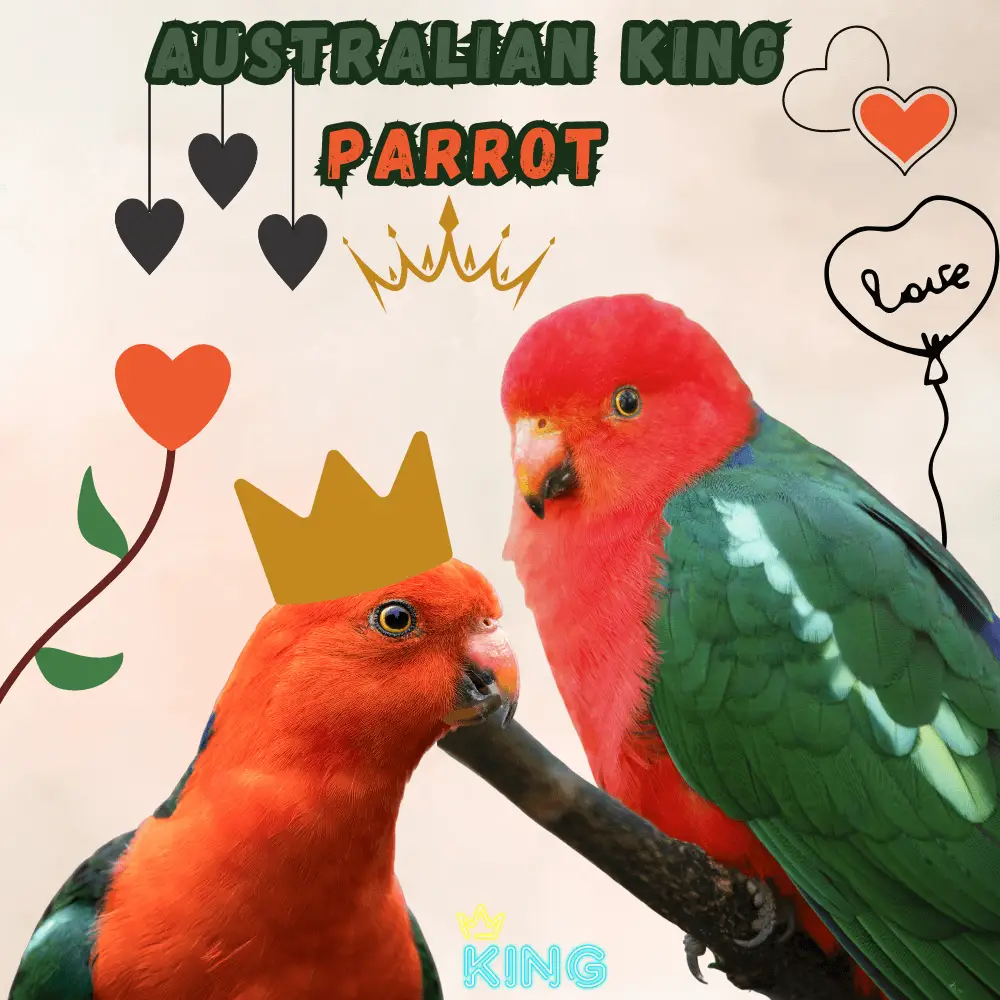King Parrot: (Australian king parrot) is a somewhat rare parrot in the world. They make relatively calm and placid pets if hand-raised, and their striking colors make them ideal for bird lovers looking for an unusual specimen.
The taxonomic name for the Australian king parrot is Alisterus scapularis. The species was first described by German naturalist Martin Lichtenstein in 1818. The genus Allestrus includes three species, all known as king parrots. Other species include the Papuan king parakeet and the Moluccan king parakeet.
There are two recognized subspecies of the Australian king parrot: Alisterus scaplaris minor, and A.scapcularis scaplaris.
King parrot habitat
King parrots are native to coastal eastern Australia and New Guinea, where they are seen in parks, farms, and suburbs.
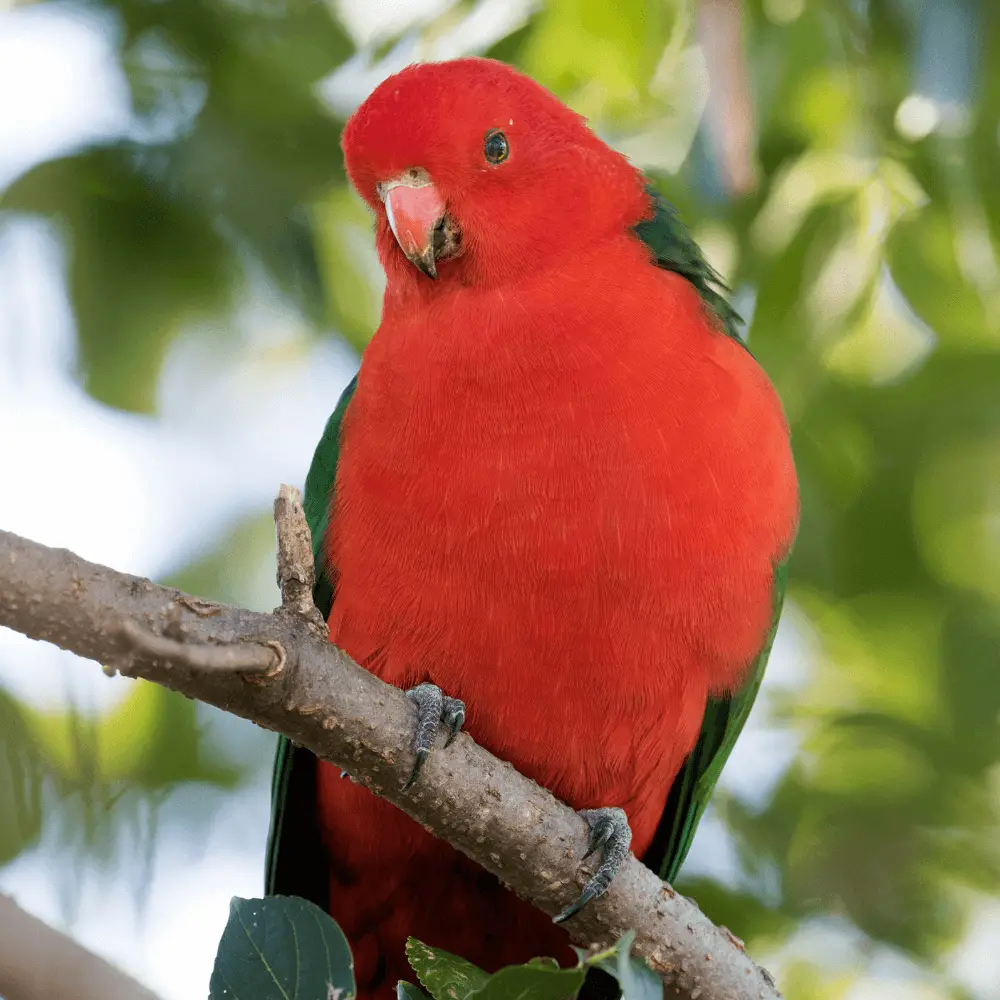
King parrot lifespan
In captivity, Australian king parrots live an average of 25 to 30 years with proper care.
Behavior of parrots
Australian king parrots are not overly emotional parrots, and most tend to prefer not being handled.
Although these parrots are large, Australian king parrots are known to be among the quieter parrot species, and they don’t tend to scream in the same way as other large parrots such as macaws.
Instead, they tend to vocalize delightfully at an audible yet very agreeable level and will entertain their owners with their whistles and chatter. When properly socialized and stimulated, Australian king Parrots can learn to talk, but they are not particularly known for their impressive speaking ability.
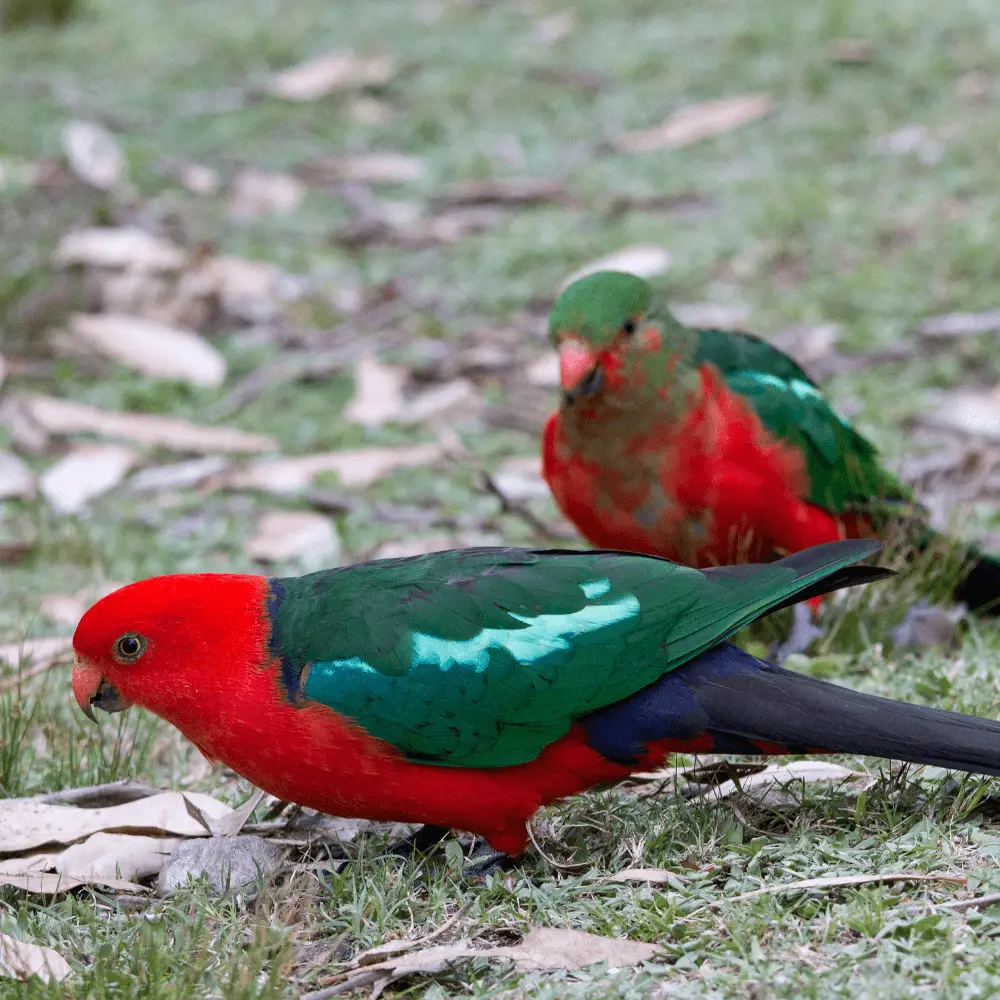
Taking care of king parrots
Although highly sought after due to its calm nature and beautiful colors, it can be difficult to find an Australian king parrot.
If you are looking to adopt a pet, try contacting your local exotic bird club or mariculture society and ask them to see if they know of any breeders in your area. Once you’ve contacted a breeder, ask lots of questions and try to schedule an appointment to visit with the birds.
Although the vast majority of Australian royal parrots prefer minimal handling, they can be hand-tamed by teenage owners, and are said to be among the world’s most adorable large parrots. This does not mean that the Australian king parrot will never bite – because all parrots will bite.
King parrot food
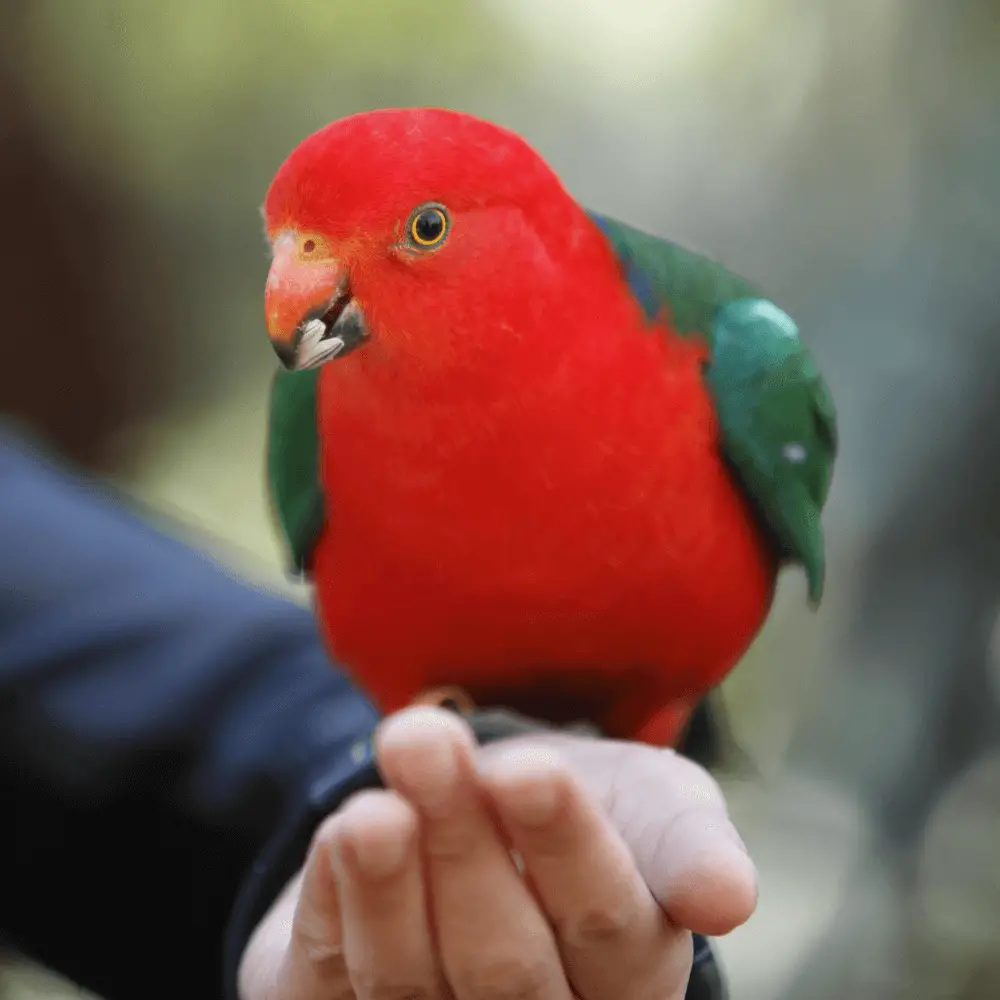
In the wild, Australian royal parrots feed on a diet of fruits, nuts, berries, seeds, and flowers. In captivity, as with all pet parrots, proper nutrition is essential to the health of the King parrot.
Most owners give their birds a high-quality commercial eggplant and seed mix, as well as plenty of fresh fruits and vegetables such as corn, carrots, mangoes, and bananas, and leafy greens like spinach.
Although high in fat, nuts such as almonds and peanuts are a favorite among these birds. Whole grains such as oats, millet, and quinoa are also readily accepted at feeding times.
King parrot training
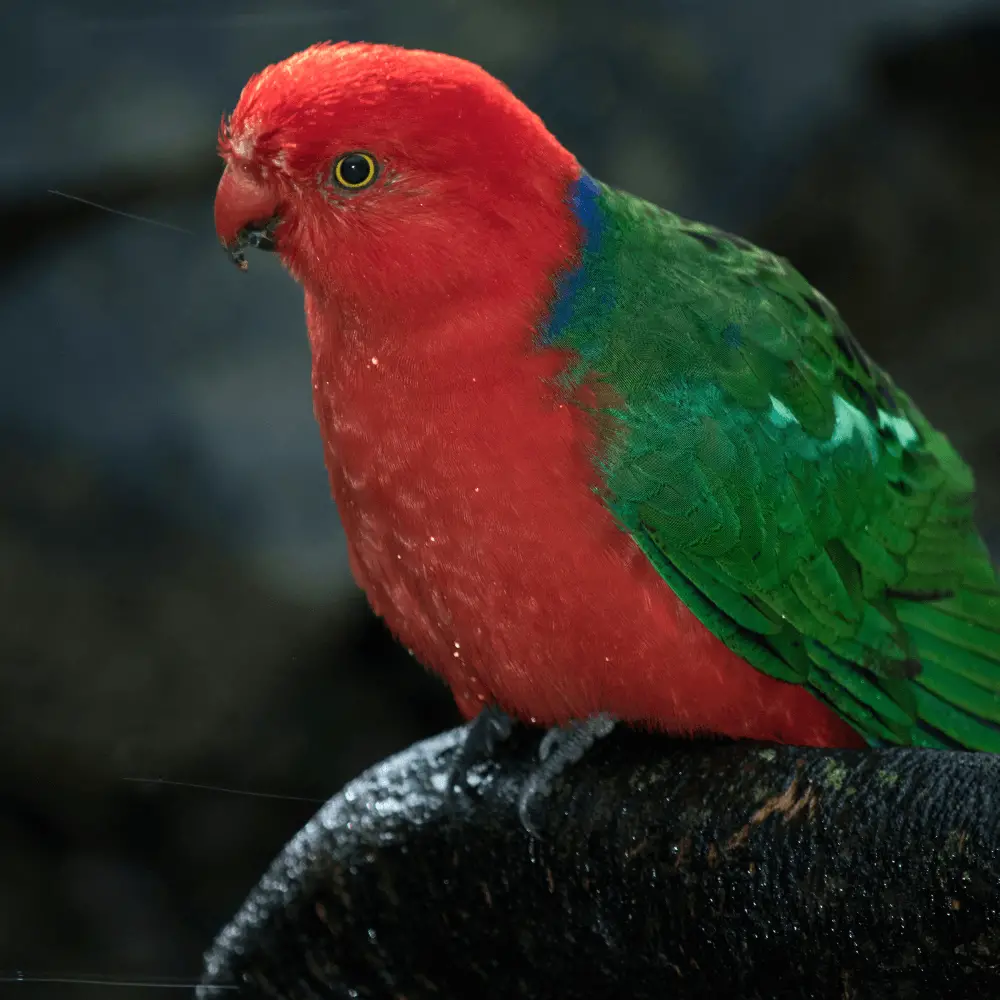
Australian royal parrots, being large birds, need plenty of space to exercise. These birds love to climb, swing, and chew, so an extra-large cage with lots of safe play is the perfect environment for them.
Although they generally don’t crave human interaction like some other parrot species, they still require at least 3 to 4 hours of supervised outside-cage playtime per day.
This should happen in a large “whore” area of your home, as Australian King Parrots are very curious and intelligent and can get themselves into trouble if precautions are not taken to ensure their safety.
King parrot health
Australian king parrots are very susceptible to Bacillus infection, which is almost fatal and difficult or impossible to treat. Make sure to purchase birds that have been adequately quarantined.
SOURCE: Avi Birds

